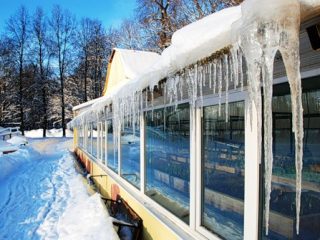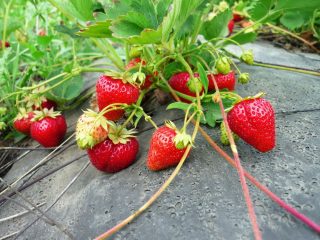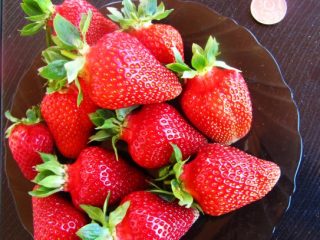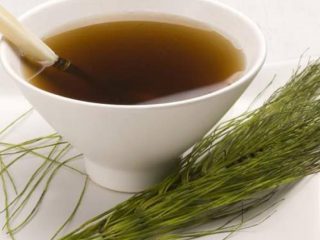Content
Almost all summer residents grow strawberries on their plots. The choice is extremely large, promising new products appear every year, and it is easy for a novice gardener to get confused in them. If you study the varietal characteristics, the Romantika strawberry looks very good. It combines the attractive appearance and taste of berries with ease of care and the ability to adapt to a wide range of not always favorable weather conditions.
Description and characteristics of the strawberry variety Romantika
Strawberry Romantika cannot be called a variety that has any outstanding features, with the exception of the original flowering. Rather, it is an “average” variety with very good characteristics.
Appearance and taste of berries
Romantika's bushes are compact - about 25 cm in height and 30 cm in diameter. The leaves are large, the flower stalks are tall, powerful, and do not bend under the weight of large berries.

Romantic bushes in bloom immediately attract attention in the garden bed
The berries are one-dimensional, weighing about 40 g, cone-shaped, most of them ribbed. The skin is a typical “strawberry” color, dense but thin. The seeds are small, yellowish.
The pulp of the berries of the Romantika variety is pink-red, juicy, and tender. The taste is balanced, sweet, with barely noticeable sourness.

Ripe berries of Romantika are characterized by an aroma very reminiscent of wild strawberries
Flowering period, ripening period and yield
Romantika is a medium-ripening variety. It blooms towards the end of May. The main “wave” of fruiting occurs on the 20th of June. Then, over the next month, you can remove individual berries. At the end of July, fruiting stops.

An adult bush brings approximately 0.7-0.8 kg per season
Frost resistance
Strawberries Romantika can survive the winter without being damaged at -25 ºС. Accordingly, when grown in a subtropical climate, it does not require shelter for the winter. In central Russia, the Urals, and Siberia, plants will need protection, especially if weather forecasters predict severe frosts and snow deficiency.
Resistance to diseases and pests
Strawberry Romantika's immunity is not bad. With proper care and the right choice of planting site, it rarely suffers from diseases and pests. Only if the weather, low temperature, high humidity, favorable for the development of pathogens, is established for a long time, do plants require preventive treatments. Folk remedies are usually sufficient to repel insects.
Pros and cons of the variety
Strawberry Romantika has no significant advantages, as well as significant disadvantages.
pros | Minuses |
Easy to care for | Relatively few whiskers forming |
Frost resistance sufficient for wintering in many Russian regions | Berries that become smaller and dry out due to prolonged heat and lack of watering |
The ability of plants to withstand short-term drought, temperature changes, prolonged rains, and other unfavorable weather conditions without much damage to themselves |
|
Developed root system, providing seedlings with quick and successful adaptation after planting in the garden |
|
Original soft pink flowers |
|
Externally presentable and very good taste of berries |
|
Versatility of purpose - the fruits can be eaten fresh, frozen, or prepared for the winter |
|

Strawberry Romantika has good keeping quality and transportability
Features of cultivation
Strawberry Romantika does not require any specific agrotechnical measures. The planting site is chosen taking into account the general rules; plant care is standard:
- Strawberries Romantika are planted in an open place, well warmed by the sun and protected from cold drafts.
- This variety is not picky about the quality of the substrate. The ideal option would be nutritious, but at the same time quite loose loam or sandy loam with a neutral or slightly acidic pH (5.0-6.0). In general, the Romantika strawberry takes root on any soil, except for the lightest and heaviest.
- If the groundwater is shallow (up to 0.5 m), it is better to move the planting to another location. If there is no alternative, high (about 30 cm) raised beds will be required.
- The recommended planting pattern is 30-40 cm between adjacent bushes with a row spacing of 50-60 cm.
- Immediately after planting, the Romantika strawberry needs daily moderate watering. When the plants take root and new leaves begin to appear, the intervals are increased to 5-7 days, adjusting them depending on the weather. The average norm is about 3 liters per bush.
- During the season, Romantika strawberries are fed three times. At the very beginning of the growing season, when the snow melts from the garden bed, natural organic matter is added. Further, during the budding stage and about a month after the end of fruiting, special fertilizers for strawberries containing phosphorus and potassium are applied.
- To prevent damage by pathogenic microflora, Romantika strawberries and the soil in the garden bed are treated with any fungicide before flowering. Next, spraying is repeated at intervals of 12-15 days, if weather favorable for the development of pathogenic fungi occurs. To repel pests, it is enough to periodically dust the soil in the garden bed and the bushes themselves with dry mustard, plant onions, garlic, marigolds, and other plants with a pungent odor that is unpleasant for insects next to the strawberries.
- The Romantika variety can do without special shelter from frost. But if the winter is predicted to be very cold and with little snow, it is better to play it safe. Peat or humus is added to the base of the plants, and the bed is covered with fallen leaves, straw, and dry grass. Additionally, you can stretch any covering material on the arches over the top.

This variety responds well to fertilizing with both natural organic matter and store-bought fertilizers.
Conclusion
Strawberry Romantika is definitely a variety that deserves the attention of gardeners. The berries are very sweet, tasty, attractive in appearance, and have a universal purpose. Plants require standard agricultural technology; you don’t have to devote a lot of time and effort to planting. The variety can adapt to weather and climatic conditions that differ from optimal ones, and “forgives” the gardener unintentional mistakes in care.








